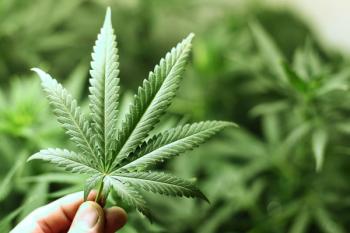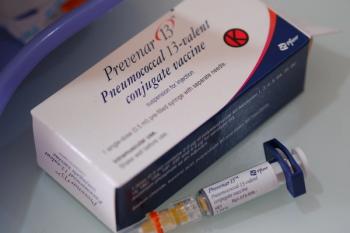
Six tips to boost pharmacy efficiency
As pharmacists switch from reimbursement based on a fee-for-service model to value-based care, these best practices can help maximize efficiency despite budget constraints and lean staffs.
Delivery of patient-centered care is a priority for clinicians and healthcare leaders alike. Making the switch from reimbursement based on a fee-for-service model to value-based care is changing everything.
Clinicians' workflow is being streamlined to enable them to focus on improving outcomes. This focus on efficiency is also applying itself to pharmacy, as pharmacists look for ways to maximize time spent on patient-care initiatives. From medication therapy management (MTM) to transition-of-care programs, the role of pharmacy has never been more critical. However, in a time of budget constraints and cost-containment measures, when staff cannot be added, this poses a management challenge for day-to-day pharmacy operations.
Evolving roles
To deliver high-quality patient-centered care, hospital and pharmacy leaders need to maximize the efficiency of their pharmacy operations in support of overall hospital initiatives and goals.
Pharmacy staff must be involved in supporting critical strategic mandates such as reduction of unnecessary readmissions and extension of the continuum of care. Specific areas of focus include integration of pharmacists into care transitions, improvement of post-discharge medication adherence, and provision of clinical pharmacy services in ambulatory care environments.
Pharmacists and technicians need to practice at the top of their licenses and/or certifications to provide the greatest possible value. Efficiency will not be optimized if pharmacists perform tasks that could be accomplished by technicians or if technicians spend time on work that could be automated.
Pharmacies need to adopt appropriate levels of automation so that staff can focus on the highest-priority clinical initiatives.
Best practices
Using proven tools and best practices, many hospital leaders and health-system pharmacy executives have worked with outside partners to help streamline pharmacy operations and redeploy staff. Here are six practices that can be implemented with minimal time, effort, and expense.
Â1. Use technologiesto simplify drug-spend management. The creation of reports to analyze drug spend or track pharmacy initiatives is a time-consuming process. One study found that the process of creating a report that would yield meaningful information to analyze drug spend took 3.9 hours on average.1 Since hospital pharmacies in this study produced 11 reports per quarter on average, staff may spend more than 40 hours per quarter compiling and rearranging data to create meaningful reports.
Automated drug-spend analytics technology can produce these reports, requiring minimal staff time. Instead, pharmacy staff can use the time saved to analyze results and identify opportunities for savings.
 2. Avoid reinventing the wheel. Pharmacy staff often spend significant time developing clinical initiatives or policies and procedures, as well as on other administrative tasks. For example, a thorough drug-class review prepared for a hospital’s Pharmacy and Therapeutic Committee may require the creation of a complex document, which can take up to 200 hours.2
However, by maintaining a robust, regularly updated repository of standardized documents that have been created and thoroughly reviewed by several experienced pharmacists, pharmacy staff can modify preexisting documents instead of developing them from scratch. Examples of such standardized documents include drug-class reviews and interchanges, medication guidelines, competencies, and policies and procedures. Analysis among hospital pharmacies using such document repositories has found that on average, nine documents per quarter are accessed, saving more than 550 hours.3
 3. Use analytics tools to optimize purchasing. As a result of meaningful-use requirements, most hospitals are adopting barcode technologies that will scan medications at a patient’s bedside. McKesson experts estimate that approximately 80% of oral solids are packaged in unit doses with barcodes. The other 20% should be repackaged.
Increased use of barcode scanning technology generates an immense amount of data about the drugs being purchased and administered. Analysis of this information for the valuable insights it can yield often does not occur, however, and when it does, it is extremely time-consuming, taking months of a technician’s time. Sophisticated analytical tools can make recommendations to help a pharmacy optimize its practices for purchasing oral solids. These automated purchasing recommendations are produced efficiently and can help a health system streamline its drug purchases.
 4. Use a perpetual inventory system in concert with automated systems. Hospitals often keep their pharmaceutical inventory in various locations and use different systems to track this inventory. When such systems are not linked, the result is inefficient ordering and receiving processes.
Using a perpetual inventory system in conjunction with automation systems means that electronic orders are processed automatically, reducing order-creation time by up to 75%. Such systems can help reduce by 50% the time spent receiving and restocking drugs, help increase inventory turns by more than 40%, lead to a 30% reduction in inventory costs, and help a pharmacy maintain its formulary.4
 5. Optimize processes related to 340B. Management of drug purchases related to the 340B program is extremely complex. Historically, aspects of patient eligibility, drug purchasing, and inventory were handled manually. Software tools have helped pharmacies manage 340B patient eligibility, drug eligibility, and pharmacy replenishment, but often have not been integrated with a health system’s drug-purchasing system.
New 340B systems integrate patient and drug eligibility for 340B with purchasing systems to give users greater visibility of their 340B accumulation data and availability of a supplier’s inventory at the wholesaler’s distribution center. This level of integration can help a health system better manage its purchasing of items in short supply in the market, as well as streamline the purchase of items requiring special management, such as controlled substances and drop-ship items.
 6. Automate the NDC update process. It can be difficult and time-consuming to keep national drug code (NDC) information up to date within pharmacy information systems. However, incorrect NDC data can adversely affect decision-making and billing, as well as nursing workflow and patient safety.
Solutions now exist to automate the NDC update process, so that the NDC data used throughout a health system are accurate and up to date. Accurate NDCs can help reduce or eliminate NDC-related pricing errors, maximize bar-code scan rates, and improve overall workflow and efficiency.
The goal
Realizing efficiencies from these technologies and best practices is not the ultimate goal. Achievement of greater efficiency will allow pharmacists to spend more time on high-value-added activities, such as direct patient care and MTM across the continuum of care. These efforts support the entire health system in adapting to and succeeding in a value-based environment.
References
1. McKesson Pharmacy Optimization Independent Analysis, 2012
2. Ibid
3. Ibid
4. Shack, J., Tulloch, S. (2008), Integrated pharmacy automation systems lead to increases in patient safety and significant reductions in medication inventory costs [Shore Memorial Hospital] (Case Study). Fairport, NY: Shack & Tulloch, Inc.
Dave Ehlert is vice president, McKesson Health Systems. For information, contact McKesson at 800-571-2889 or healthsystems@mckesson.com.
Newsletter
Pharmacy practice is always changing. Stay ahead of the curve with the Drug Topics newsletter and get the latest drug information, industry trends, and patient care tips.




































































































































